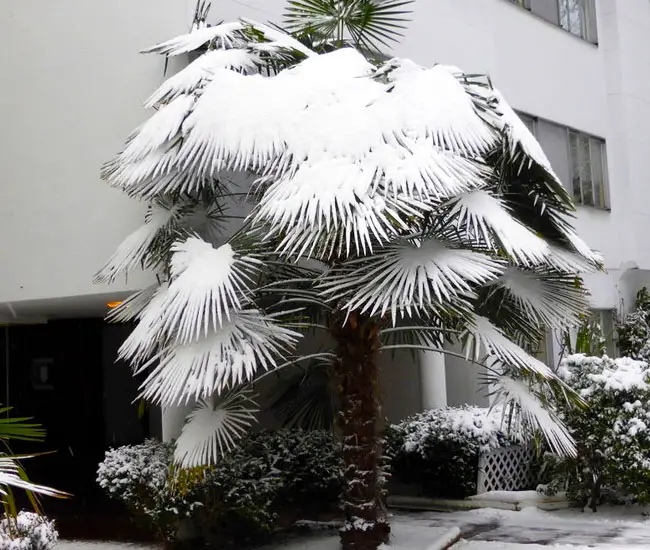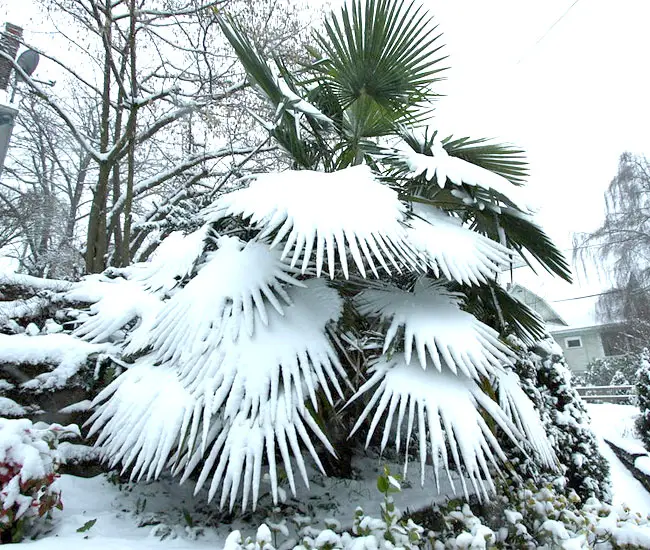Why Palm Tree Protection is Crucial During Freezing Temperatures
Palm trees are often associated with warm and sunny climates, but they can still be vulnerable to damage from freezing temperatures. When the mercury drops, palm trees can suffer from frost damage, which can have long-term effects on their health and appearance. In fact, prolonged exposure to freezing temperatures can cause palm trees to become stressed, leading to a decline in their overall health and making them more susceptible to disease and pests. This is why it’s essential to know how to protect palm trees from freezing temperatures, as the consequences of inaction can be severe. By taking proactive steps to safeguard your palm trees, you can help ensure their continued health and beauty, even in the face of harsh winter conditions. Understanding the importance of palm tree protection is crucial for maintaining their health and longevity, especially during the winter months when they are most vulnerable.
Understanding the Risks: How Freezing Temperatures Affect Palm Trees
Freezing temperatures can have devastating effects on palm trees, causing damage to their leaves, trunk, and roots. When palm trees are exposed to frost, the water inside their cells can freeze, leading to cell death and tissue damage. This can result in a range of symptoms, including wilted or discolored leaves, blackened or cracked trunks, and root damage. In severe cases, frost damage can be fatal, especially if the tree is already stressed or weakened. It’s essential to understand the risks associated with freezing temperatures and take proactive steps to protect palm trees from frost damage. By knowing how to protect palm trees from freezing temperatures, palm tree owners can help mitigate the risks and ensure their trees remain healthy and thriving.
How to Prepare Your Palm Tree for Winter: Pre-Freeze Care Tips
Preparing your palm tree for winter is crucial to ensure its survival during the harsh winter months. By taking proactive steps, you can help protect your palm tree from freezing temperatures and reduce the risk of damage. One essential step is to prune your palm tree before the onset of winter. This helps to remove any dead or damaged fronds, reducing the risk of damage from wind and snow. Additionally, pruning can help to promote healthy growth and encourage the tree to focus its energy on developing strong roots and a sturdy trunk. Fertilizing your palm tree in the fall can also help to prepare it for winter. A balanced fertilizer can provide essential nutrients, helping to strengthen the tree’s defenses against cold temperatures. Mulching around the base of the tree can also help to insulate the roots and retain moisture, reducing the risk of root damage from freezing temperatures. By following these pre-freeze care tips, you can help to protect your palm tree from the harsh effects of winter and ensure its continued health and beauty.
Effective Methods for Protecting Palm Trees from Frost Damage
When it comes to protecting palm trees from frost damage, there are several effective methods to consider. One of the most popular methods is covering the tree with a breathable cloth or sheet, such as burlap or a frost blanket. This helps to trap warm air next to the tree and protect it from harsh winds and freezing temperatures. Another method is to wrap the tree with insulation, such as foam or fiberglass, to keep the cold air out and the warm air in. Anti-desiccant sprays can also be used to protect the tree’s leaves and trunk from drying out and becoming vulnerable to frost damage. Additionally, applying a layer of mulch around the base of the tree can help to insulate the roots and retain moisture. By understanding how to protect palm trees from freezing temperatures, palm tree owners can take proactive steps to safeguard their trees from frost damage. By combining these methods, palm tree owners can create a comprehensive protection plan that ensures their trees remain healthy and thriving throughout the winter months.
The Role of Irrigation in Palm Tree Winter Care
Proper irrigation is crucial during the winter months to ensure the health and survival of palm trees. When palm trees are exposed to freezing temperatures, they require less water due to reduced growth and metabolic activity. However, it’s essential to continue providing some water to prevent dehydration and root damage. To adjust watering schedules, palm tree owners should reduce the frequency of watering but maintain the same overall amount of water. This can be achieved by watering the tree deeply but less often. It’s also important to avoid overwatering, which can lead to root rot and other problems. By understanding how to protect palm trees from freezing temperatures, palm tree owners can adjust their irrigation strategies to meet the changing needs of their trees. Additionally, using a drip irrigation system or soaker hose can help to deliver water directly to the roots, reducing evaporation and runoff. By taking a proactive approach to irrigation, palm tree owners can help their trees thrive during the winter months and reduce the risk of damage from freezing temperatures.
Using Windbreaks and Cold Frames to Shield Your Palm Tree
Windbreaks and cold frames are two effective methods for protecting palm trees from harsh winter winds and freezing temperatures. Windbreaks, such as burlap or snow fencing, can be placed around the palm tree to block cold winds and reduce wind chill. This helps to prevent damage to the tree’s leaves and trunk, and can also reduce the risk of frost damage. Cold frames, on the other hand, are structures that cover the palm tree and trap warm air next to the tree, providing an extra layer of protection from freezing temperatures. By using windbreaks and cold frames, palm tree owners can create a microclimate around their tree that is warmer and more protected than the surrounding environment. This can be especially useful for palm trees that are planted in exposed areas or are particularly sensitive to cold temperatures. By understanding how to protect palm trees from freezing temperatures, palm tree owners can take proactive steps to safeguard their trees and ensure their survival during the winter months. By combining windbreaks and cold frames with other protection methods, such as covering and mulching, palm tree owners can create a comprehensive protection plan that ensures their trees remain healthy and thriving throughout the winter.
How to Identify and Treat Cold Damage in Palm Trees
Identifying cold damage in palm trees is crucial to providing timely treatment and preventing further damage. Cold damage can manifest in various ways, including wilted or discolored leaves, blackened or cracked trunks, and roots that are soft or mushy. To treat cold damage, it’s essential to act quickly and provide the necessary care to help the tree recover. This may involve pruning damaged leaves or branches, applying fungicides to prevent disease, and adjusting irrigation schedules to ensure the tree is receiving adequate water. In severe cases, it may be necessary to provide additional support, such as staking or bracing, to prevent further damage. By understanding how to identify and treat cold damage, palm tree owners can take proactive steps to protect their trees and ensure their survival. Additionally, by incorporating preventative measures, such as covering and mulching, into their winter care routine, palm tree owners can reduce the risk of cold damage and ensure their trees remain healthy and thriving. By learning how to protect palm trees from freezing temperatures, palm tree owners can enjoy the beauty and benefits of their trees for years to come.
Long-Term Strategies for Protecting Your Palm Tree from Freezing Temperatures
While short-term protection methods are essential for safeguarding palm trees from freezing temperatures, long-term strategies can provide an added layer of protection and ensure the tree’s health and survival. One key strategy is to select cold-hardy palm tree species that are naturally more resistant to freezing temperatures. By choosing species that are adapted to colder climates, palm tree owners can reduce the risk of damage and minimize the need for extensive protection measures. Another long-term strategy is to plant palm trees in protected areas, such as near buildings or in courtyards, where they are shielded from harsh winds and extreme temperatures. Additionally, palm tree owners can incorporate design elements, such as windbreaks and cold frames, into their landscaping to create a more protected environment for their trees. By understanding how to protect palm trees from freezing temperatures and incorporating long-term strategies into their care routine, palm tree owners can enjoy the beauty and benefits of their trees for years to come. By taking a proactive and comprehensive approach to palm tree care, palm tree owners can ensure their trees remain healthy, thriving, and protected from the harsh effects of winter weather.







